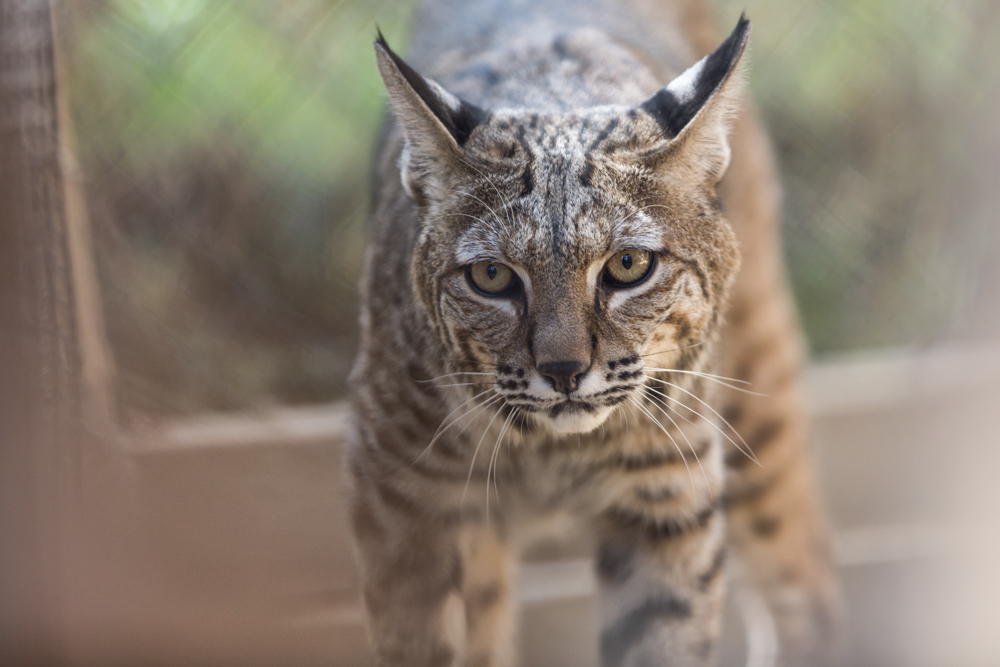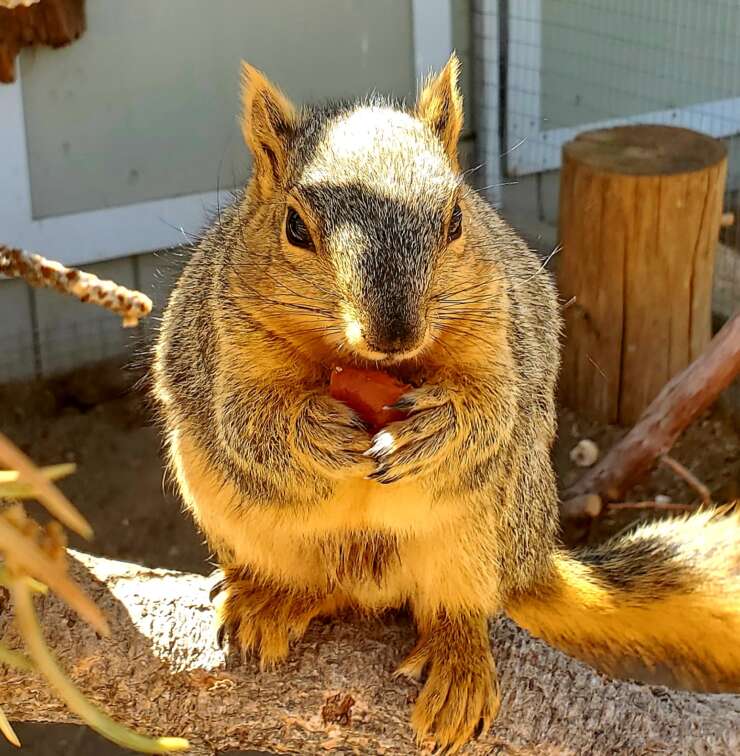
Bobcats at the Zoo
Shakespeare – in 2012, a baby male bobcat whose eyes were still closed was found in a backyard in Redlands. It is assumed that the mother was transferring her babies from one place to another, but ran away when the homeowner’s dogs were let out into their backyard. The home owners took the tiny bobcat to the Redlands Animal Shelter and the Animal Shelter called us. Because Shakespeare’s eyes were still closed, he ended up imprinting on people. He is quite a show off at the zoo. He loves to stalk people and then pounce at the front of his cage when he thinks no one sees him.
Baby – was rescued as a baby when she was found in a fire clearing.
Description
Bobcat (Felis rufus)
The Bobcat is named for its tail which appears to be bobbed. They hunt in stealth fashion and will deliver a deathblow with a leaping pounce that can cover 10 feet. The bobcats in our care have lots of personality and are full of fun antics.
What do Bobcats eat?
Bobcats are carnivores. They eat rabbits, mice, squirrels, chipmunks, birds and other small game. In the winter when other prey is scarce, the males will even hunt deer, or if near human habitations, sheep, poultry and young pigs. Bobcats will cache large kills.
How long do Bobcats live?
Their lifespan averages 14 to 16 years in captivity, but some have been known to live up to 20 years!
How many Bobcats can be born at a time?
One to six kittens are born at a time. They are weaned at 12 weeks of age. They will remain with their mother until they are 12 months old.
Where can Bobcats be found?
Bobcats are found in much of North America and also through Mexico. They are found in forests, swamps, deserts and even in suburban areas. It is estimated that there over a million bobcats in the United States alone.
Interesting facts:
- Bobcats are elusive and nocturnal.
- Bobcats mark their territory or home range with urine, feces, scent markings, scratches on trees and scrapes (piles of dirt and debris marked with scent).
- The bobcat’s growls and snarls are so deep and fearsome, they sound as if they are coming from a much bigger animal.
- Bobcats can have home ranges as big as 20 square miles.
- Bobcats are excellent swimmers.
- Bobcats are so ferocious that even Mountain Lions will try to avoid them.


